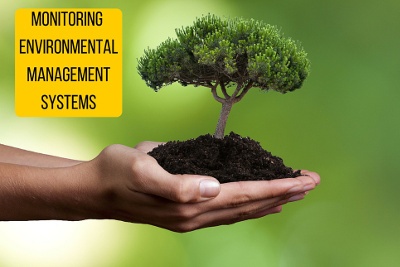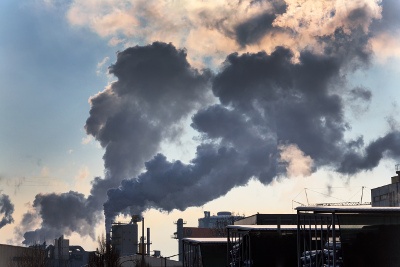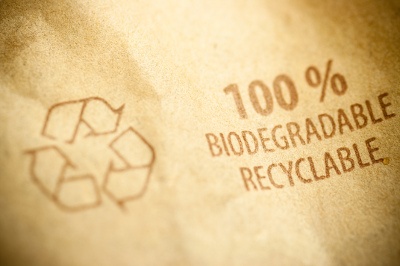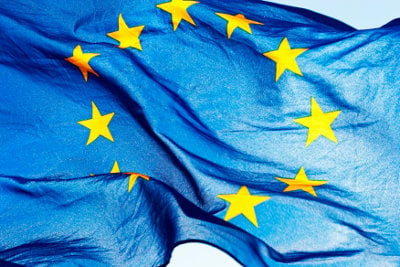 Every year, 1.6 million people in China die from lung, heart and other health problems related to air pollution.
Every year, 1.6 million people in China die from lung, heart and other health problems related to air pollution.
Besides the tragic consequences of continued pollution, production at a polluting factory can come to a screeching halt if the local government decides to intervene (related: 3 Ways Pollution Affects Manufacturing in China).
Most importers in developed countries are used to hearing about environmental regulations on the home front. But now there are concerns about the effects of pollution abroad. And mounting global pressure has made it harder to simply offshore manufacturing and the pollution it causes. Just as many retailers have started enforcing standards for social compliance, many have started insisting that suppliers adhere to certain environmental standards.
How can you be sure if your suppliers are compliant with emissions and other environmental standards?
Thankfully, there are a few widely recognized certifications for environmental management systems that you can use to make sure your suppliers are meeting standards set by your retailers and distributors:
1. ISO 14000
Have you heard of ISO 9001, the standard commonly used to evaluate quality management systems?
ISO 14001 is the equivalent standard for verifying environmental management systems. It comes from the ISO 14000 family of standards created by the International Organization for Standardization (ISO). Suppliers can obtain environmental certifications in ISO 14001:2015 and ISO 14006:2011 to show responsible production processes.
Suppliers that hold some certification in ISO 14000 are far less likely to be shut down for excessive pollution. Some manufacturers insist on certification for assurance that their supply chain isn’t contributing to the growing pollution problem. For example, Johnson & Johnson requires all manufacturing and R&D sites to achieve and maintain a third-party certification demonstrating that they comply with ISO 14001.
"Being certified with #ISO14001 can protect your #supplier from getting shut down for #pollution"Certification in ISO 14001 can also provide several other compelling benefits, such as:
- A reduction in production waste and operating costs;
- Higher conformance to regulatory requirements;
- Improved corporate social responsibility and public image; and
- Decreased public liability insurance costs in some markets
An audit of their factory is the best way to determine if a supplier meets requirements of ISO 14001.
2. Eco-Management and Audit Scheme (EMAS)
The EMAS environmental certification was developed by the European Commission. It goes above and beyond ISO 14000 and truly attempts to help improve a business’s interactions with the environment as opposed to just meeting a standard. While it incorporates the elements of ISO 14000, EMAS differs in that it also looks at continuous performance improvement, employee involvement and legal compliance, among other aspects.
In a report on the costs and benefits of EMAS, the European Commission found three major benefits to becoming certified:
- Increased efficiency savings;
- Reduced negative incidents; and
- Improved stakeholder relationships
While certification may not be reasonably achievable for every supplier, manufactures can benefit from working toward meeting requirements of EMAS. The European Commission claims a 27-percent reduction in internal energy use between 2007 and 2008 by implementing EMAS. You can view case studies of successful implementation for more information.
3. Carbon footprint verification
What is a “carbon footprint”?
When we talk about a person’s carbon footprint, we mean the amount of carbon dioxide (CO2) released by their activities. Applied to manufacturing, carbon footprint refers to the amount released during production. Sometimes this amount will also include CO2 emitted by other operational processes, such as product distribution.
CO2 emissions are significant because they’re seen as a major contributor to global warming. Minimizing your carbon footprint, and that of your suppliers, helps reassure customers, investors and regulators that you’re compliant with greenhouse gas reporting standards. Lowering pollutants also helps compliance with the Kyoto Protocol, a 1997 commitment by the United Nations to lower greenhouse gas emissions.
Verifying your carbon footprint by audit can be helpful when trying to convince a local, regional or even national government that you’re environmentally compliant and fit to operate in a certain area.
Other impressive certifications
Aside from ISO 14000 and EMAS certifications and carbon footprint verification, there are a couple other smaller indications of effective environmental systems management. While currently there’s little legislation to mandate these certifications, they can make an impact and be a selling point for the products that meet requirements.
Recycled content certification
You might have seen product packaging that makes a certain claim that the product is made with “X% recycled material” or “at least Y% recycled material”. These claims can really help show your commitment to the environment. But not just any material can be claimed as “recycled”.
Unfortunately, misinterpretation about green standards can easily occur. Claims about how “green” a product is might mean one thing to you, but another to a customer. To prevent this confusion and truly know your product meets the recycled content standard, recycled material must comply with ISO 14021 and, typically, also with the FTC’s Green Guidelines. These publications help clarify what green labeling requires.
You can also visit the U.S. Environmental Protection Agency’s comprehensive procurement guidelines page to see how you can further integrate recycled materials into your supply chain.
Biodegradability certification
Biodegradable materials are those that break down into smaller compounds via biological activity. Microbial organisms transform the materials found in products through metabolic or enzymatic processes and typically  result in CO2, water or minerals.
result in CO2, water or minerals.
The manufacturers that typically seek this accreditation produce goods ranging from plates, cups and eating utensils to soaps and detergents. If biodegradable products end up in a landfill, the ocean or elsewhere, they’ll gradually decompose, rather than become a permanent part of the environment and a potential hazard to humans and wildlife.
Receiving this certification depends on finding a qualified third-party that can conduct appropriate biodegradability testing compliant with ISO 14000 standards.
"#Biodegradable products are #cradletocradle and are impressive commitments to protecting the environment"Conclusion
You may feel that monitoring and improving environmental management systems comes secondary to manufacturing a quality product. But more and more brands are enforcing strict environmental standards throughout their supply chain.
Not only can compliance open doors to working with other retailers for distribution, it can also give customers and other stakeholders assurance that you’re taking responsibility to limit your own impact on the environment. By taking control of your own supply chain, you can truly make the planet a healthier place to inhabit.








